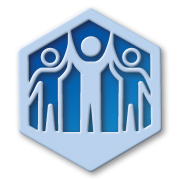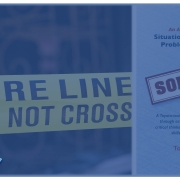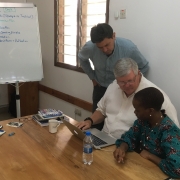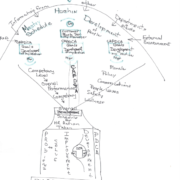The Role of HR in a Continuous Improvement Organization: Leading by Example
(Reposted by permission of the author from LinkedIn)
Have you ever been in a situation where your organization’s leaders speak and even publishes great words about what we should expect from each other? That same organization probably has a commonly held belief that if leaders put out the words then the subordinates will follow. This assumption is almost exclusively wrong and is rarely the reality of the organization’s culture.
The reason it is wrong is that the hard work of securing a commitment from all managers and supervisors is not completed before the expectations are put out. I have a different approach that says, “If you deploy HR as the example of the expectations then the organization will not only understand them but will experience them in daily interaction”
As I have stated earlier, HR is the keeper of the key. This means that in their process of conducting business, they seek out and coach individuals who display behavior that is contrary to the stated expectations. They do this from a perspective of knowing not only the meaning of the stated policies but the intent. They are challenged with ensuring the organization lives up to the intent of the policies.
Daily interaction is the mechanism for ensuring that it is known what interactions occur and measure their effectiveness against the standard and intent of the policy or practice. Individuals who experience this interaction know what the intent is and how it should be brought in to the behavior of all employees. HR provides the interactions at the actual situation to make known what is expected and use these as opportunities to ensure the sought compatibility. HR’s thinking and aim is to realize the standard and intent of the policy and to demonstrate how it can be sustained through accountability of management, supervision and operatives.
Let’s look at an example. Most companies have a policy about absenteeism. All these policies want to achieve is personal accountability from all involved in the administration and use of the policy. The intent of the policy is to create evenness in interaction with it and harmony in its application.
The first requirement is for the policy to be understood. This involves training from day one inside the organization as it is experienced and applied with an equal share of trust and understanding. The circumstances for the application of the policy are varied but the net effect of its application is to create jointness between all those involved with their sense of fairness and evenness strengthened.
The second requirement is to find a reasonable agreed to intervention so, for every case, mutual trust and respect is upheld. Too much intent is lost when good policy is lost through the interaction between the supervisor and the subordinate. How the policy is administered becomes the policy itself and inconsistencies become the norm.
For HR, past practice is always reflected upon to alleviate drift from the original intent and application of the policy, which is consistently aimed at resolving any deviation that occurs. Consistency by HR is defined as considering the same relevant factors in decisions and not making the application the same for every instance. This means that if I have had perfect attendance for four years and I miss several days of work in a short period to time, for a compelling reason, I will not be treated the same as someone who is chronically absent every Friday over a month’s timeframe. The factors considered for the persons long term record of attendance, their current situation and their reaction to being coached about the importance of being at work must be the same for both instances. This thinking eliminates the automatic reaction to all absence with a perceived inconsistency and puts the accountability on both persons to achieve attendance. The person with very little absence over a long period would be asked how the current situation can be alleviated with the help of HR and the chronic absentee would be asked to prepare a plan for how they will be at work every day. Hopefully, both achieve the same outcome.
For the chronic absentee, the supervisor would make it clear that the plan must be followed and may be reviewed frequently if not followed. The possibility of more stringent discipline would be emphasized. For the long-term perfect attender, their personal accountability would be followed but no further discipline would be spoken of if based on an assumption that they follow their long-term pattern of being at work on time every day. Their absence would be looked upon as an abnormal situation. Help would be offered if required. In one case it appears to be a pattern and in the other it is an outlier. The same factors were considered.
In both cases the determinant of success is attendance. In both the intent is to create a positive relation. It is considered acceptable only if the plan and intent is followed but, in all cases, the administration is conducted to support the appropriate behavior while making sure the desired behavior is a consistent practice.
With HR as a coach, the supervisor knows the desired process to accomplish the aims and experiences the support of success. The employees know and understand the intent and the policy is not lost one decision at a time. The coaching serves to reinforce the basic aims and intentions of HR.
To further the aims, HR would rehearse interactions between the supervisor and the subordinates to ensure that all consistency is accomplished. The supervisor is briefed by HR on the intent of the policy, the meeting is rehearsed and the meeting itself is conducted with the level of consistency that generates harmony. HR provides all the information and learning for the supervisor to achieve the desired results and serves as a standard for how these situations should be handled. Training and development enhances the competencies and the employee conducts the coaching.
Over time, HR becomes a role model for the proper execution of the policies and delivers its piece of organizational consistency. Additionally, HR reflects on all the similar interactions to determine if and how the policy is to be changed to suit the aims desired. HR is a role model for ensuring consistency, a role model of behavior and a role model of support for the organization they represent. At the corporate level of HR, they ensure that all circumstances and results administered are consistent throughout the organization with the expectations being met.
For some supervisors the interactions are difficult, so the management of processes become a consistent stream of activities to alleviate problems and improve outcomes. The organization learns from its interactions and the policy documents become living documents consistently improved through continuous improvement. Being a role model is enacting a consistent process designed to achieve business and interpersonal results and improving it when it doesn’t. Supervisors learn to rely upon HR to support their difficult interactions toward achieving business and personnel success.
It is imperative to HR that they not be a “shoot from the hip” organization. The answers to questions must be thought out thoroughly and retained and improved for both reflection and utilization as the test of their effectiveness. In a world where one letter can make a difference, HR must be aware that having gained mutual trust and respect can be lost quickly with a careless/ thoughtless act. The test for HR is not in the answers they promote but the consistent practice by all to support the aims of the organizational system whose actions are omnipresent and subject to personalities. Checks of the actual situation must come often and be accurately measured for their effect on the defined system of work. All actions in a developing system must be considered, tested and subject to improvement before they are introduced. They must be recognized as inherently difficult to assure evenness and gain the trust of those who work every day to satisfy the customers and continuously improving. The example that is set by HR speaks very loudly and is universally known by all the employees. HR’s actions are a significant determinant of success in sustaining the nature of the organization whose intent is to serve its customers and create development for its employees.

 2019, Total Systems Development, Inc.
2019, Total Systems Development, Inc.


 2019, Total Systems Development, Inc.
2019, Total Systems Development, Inc. 2019, Total Systems Development, Inc.
2019, Total Systems Development, Inc.
 2019, Total Systems Development, Inc.
2019, Total Systems Development, Inc. 2019, Total Systems Development, Inc.
2019, Total Systems Development, Inc.